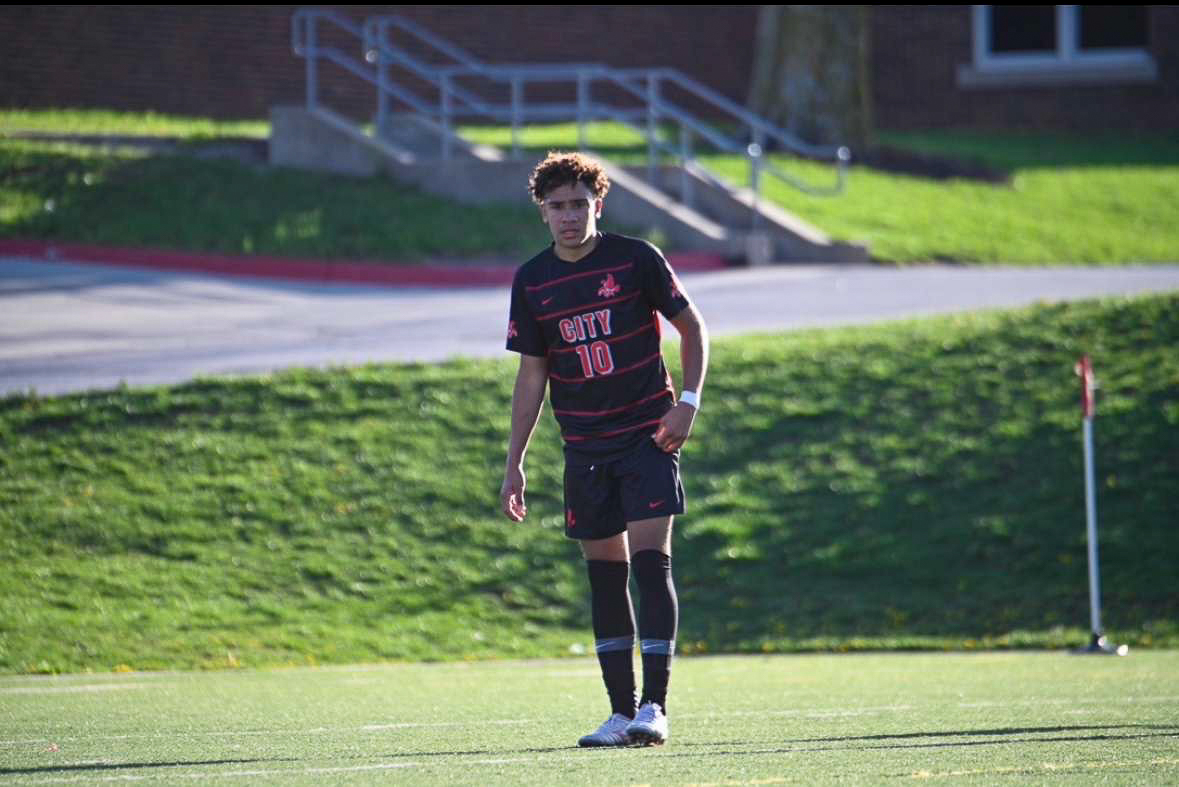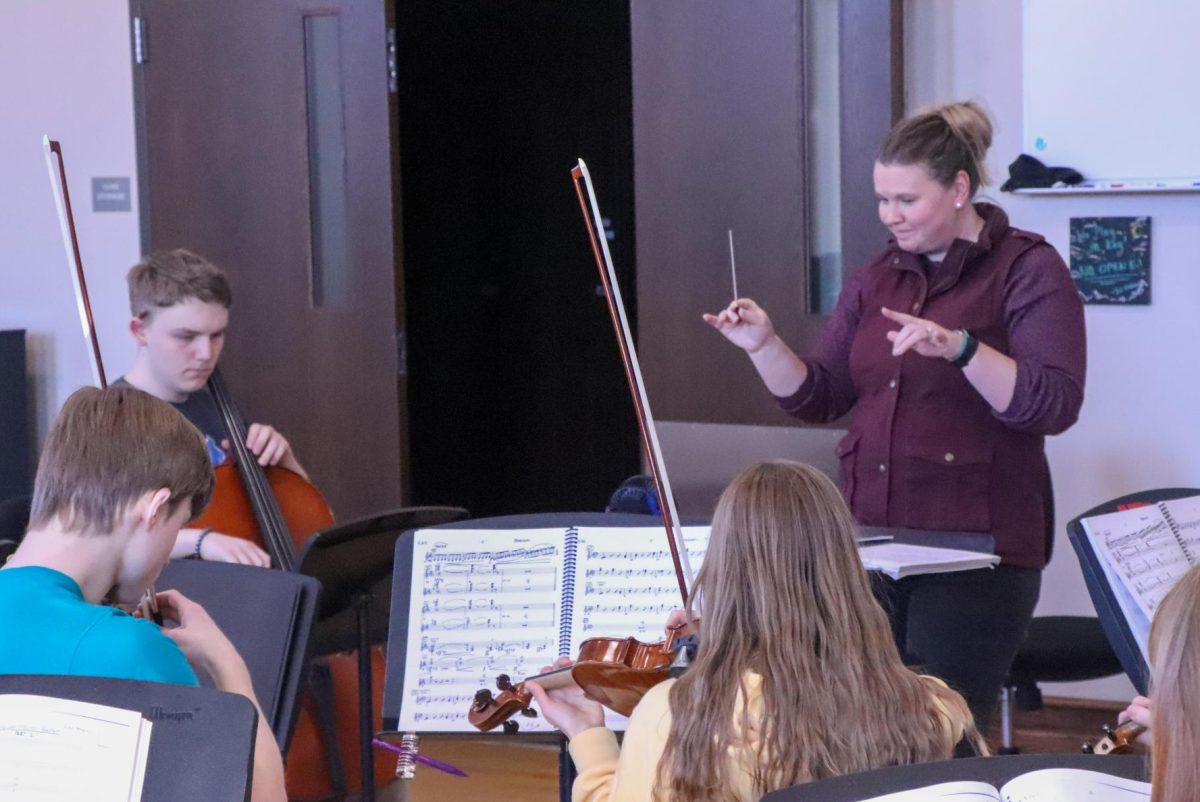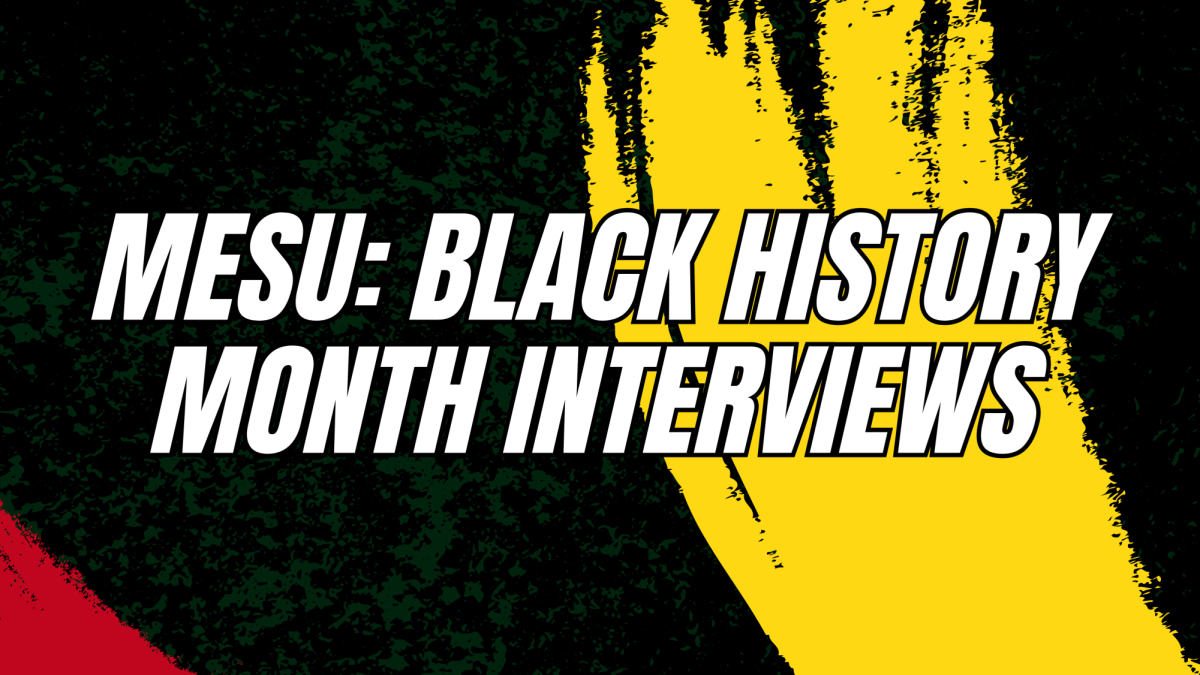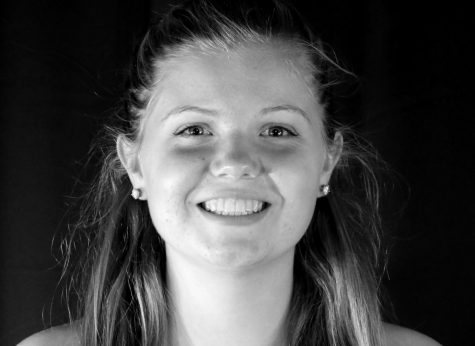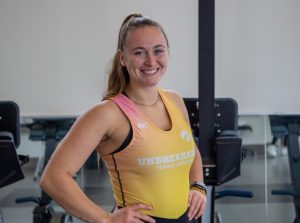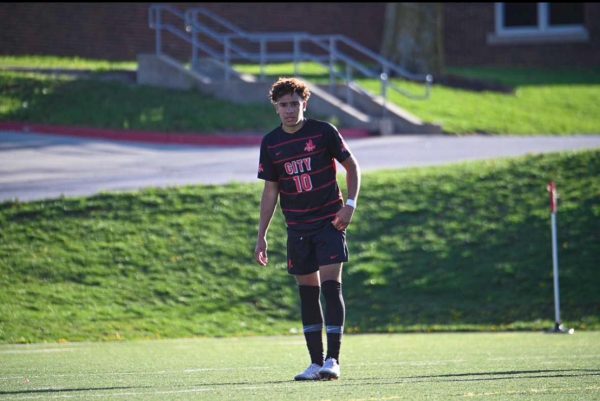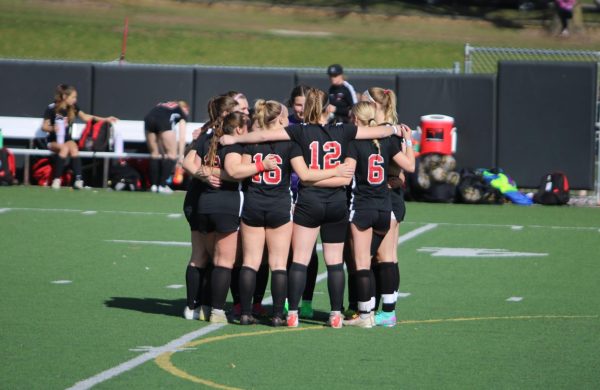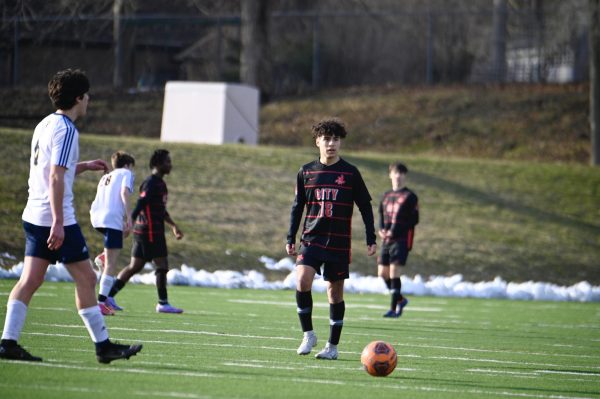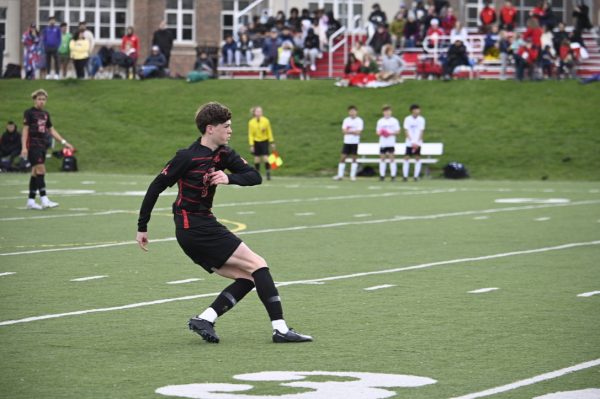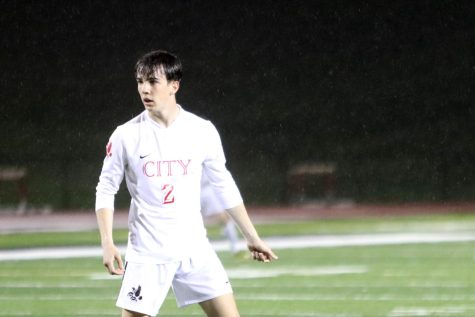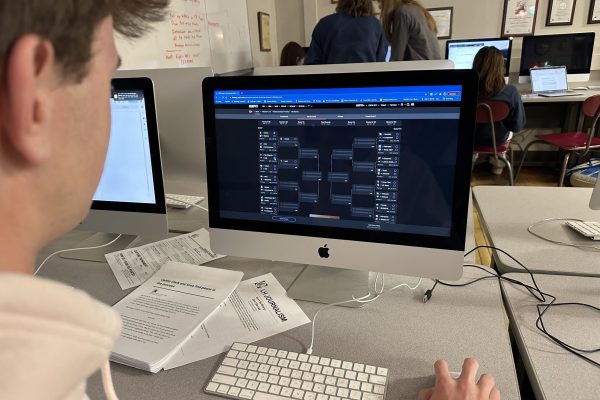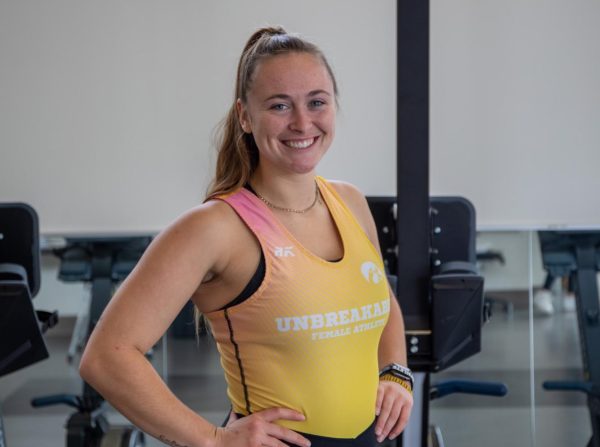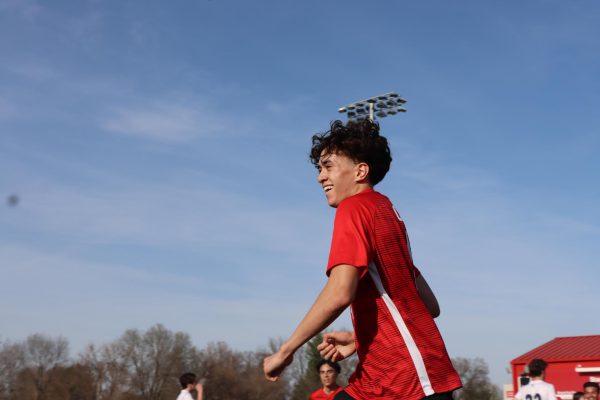Mind and Matter
In addition to physical training, athletes are increasingly using meditation and visualization techniques to improve their game outside of practice.
December 22, 2017
A recent surge in emphasizing the mental aspect of sports has occurred across the country. Within the last few years, many coaches and athletes have began to focus on incorporating mindfulness in their respective sports. The City High Athletic Department is no exception.
Head baseball coach Brian Mitchell uses techniques learned from Dr. Jason Selk, who has worked with the St. Louis Cardinals.
“We incorporate a simple 10-Minute Toughness Program, as it is efficient and not too overwhelming,” Mitchell said.
Mitchell helps his players practice visualization before practicing physically, whether on the bus before games or in the clubhouse.
“I used it as an athlete and I believe it helps us focus more on the process versus simply being concerned with outcome. It is a chance to take a minute to step back from the grind and keep things in perspective in addition to helping athletes relax. I believe the success log is equally important.”
I believe it helps us focus more on the process versus simply being concerned with outcome. — Brian Mitchell, Head Baseball Coach
The 10-Minute Toughness Program, called the “Mental Workout”, consists of five steps: Centering Breath, Performance Statement, Personal Highlight Reel, Identity Statement, and Centering Breath again.
Mitchell believes that the effectiveness of these strategies is dependent upon the buy-in of each individual athlete.
“Certain athletes are not at a point where they understand the benefit. Those that do have shared they feel real benefit to keeping them calm and focused. We do spend significant time teaching and doing the centering breath portion which can be transferred to many situations where nerves and excitement allow the calming of a racing heart.”
One of those athletes is Travis Reyhons ‘18.
“I lay down in a quiet room, close my eyes, and take deep breaths for six seconds in, hold for two seconds and breathe out. We visualize all of our successes in the game while meditating and also what we need to do better so we can be better players,” Reyhons said. “I find time to meditate/visualize before or after workouts, before baseball games when I’m nervous or even when I’m playing in the game.”
During those visualization sessions, Reyhons focuses on the details that will help him perform at his maximum ability. He thinks about how being in certain situations will feel, and how he will respond when the scenario occurs in reality.
“We think about what we need to do to get 1% better everyday,” Reyhons said. “The coaches always preach that to us. We also think about our success to remind us who we are what to almost relive that moment again.”
Although he hadn’t ever used these techniques until his coaches introduced them, Reyhons acknowledges the positive impact they’ve had on his performance.
“I’ve definitely noticed improvements by meditating,” he added. “I’m definitely not as uptight as I used to be in the games and it helps me play more loose.”
In addition to implementing a consistent visualization routine, the baseball program also attended the class Yoga for Sports at the North Dodge Athletic Center, taught by Natalie Johnson. Johnson believes that yoga is vital for any young athlete.
“If one takes yoga’s benefits and applies them to an athlete’s training and fitness, one can potentially see a variety of changes that could help the athlete,”Johnson said. “[Like], being able to reduce stress in order to perform better with improved thinking strategies, making it easier to return to sports after previous injury and perhaps navigating through fear of return to sports, reducing distractions from various life events that may hinder an athlete during a game, and helping to prevent injury by maintaining a healthy state of flexibility through the body and a strong core.”
Reyhons has experienced these outcomes firsthand.
“Yoga has helped me a lot,” said Reyhons. “Flexibility is great to have in baseball and it’s made me a better athlete. Yoga is also a great way to relax and take your mind off everything.”
Johnson believes that in addition to the physical benefits yoga offers high school athletes, perhaps the greatest aspect of yoga is the psychological strength that practitioners gain.
“The psychological game will make or break the experience and the outcome. For optimal outcome, it must be paired with the physical,” Johnson said. “In young athletes the emotional wear and tear of growing up can be a huge distraction for physical performance if the environment is not supportive.”
The psychological game will make or break the experience and the outcome. For optimal outcome, it must be paired with the physical.
— Natalie Johnson
Coaches like Brian Mitchell and his staff who understand the importance of enforcing said psychological workouts aren’t as common as Johnson hopes.
“It is essential to have a coach who has some knowledge or openness to explore this area though and unfortunately most do not have this in their background.”
Johnson understands that a season doesn’t allow for much time to convince a coach or trainer of the significant benefits of devoting the time required to implement mindfulness practice. She does hope, however, that athletes and coaches who have experienced positive results will share their strategies.
“I think word of mouth from those that have experienced the benefits of meditation, mindfulness, or yoga provides the biggest source of change or movement.”






